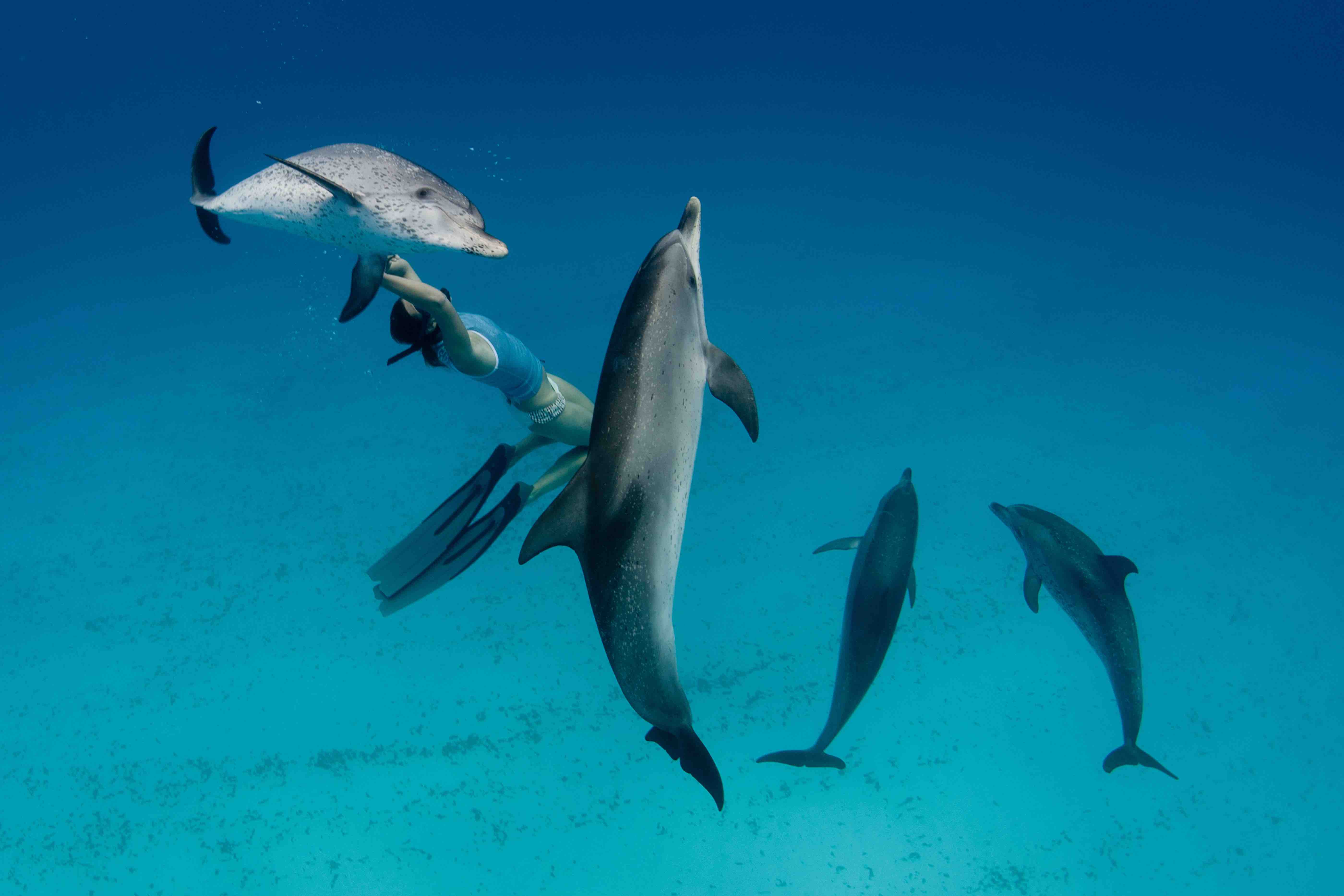
Dolphins have always held significant symbolic meaning for people. Sea animals were revered as “saviors of the shipwrecked” by seamen in the past. These majestic animals may be found in all of the world’s seas, including the deepest sections as well as certain rivers and shallow coastal areas.
There are around 40 distinct species, and more are constantly being discovered. Each one may be distinguished from the others by their striking differences in shape and colors. Jumping is a kind of communication used by intelligent beings to establish friends, heal themselves, and identify things.
Dolphins’ distinctive whistle
When we speak to infants or young children, our natural inclination is to raise our voices, improve our pronunciation, and take more time to stop between phrases than we would with an adult conversation partner. However, “baby talk” is not just used by a variety of people. According to the findings of a group of researchers, dolphins interact differently with their young than they do with adults.
According to the findings of a study that was released on Monday, 26 June 2023, female bottlenose dolphins alter their vocal tone when speaking to their young. In Florida, researchers captured the distinctive whistles of 19 mother dolphins when they were swimming with their young, alone, or with other adults. These whistles were caught both while the mothers were with their young and when they were swimming with other adults.
The distinctive whistle of dolphins is a one-of-a-kind and vital form of communication, comparable to an individual’s use of their own name. They use these whistles to communicate with one another and keep track of one another. They are constantly reassuring one another, “I’m here, I’m here,”.
Effectiveness of baby talk
Baby talk, often known as motherese, is the traditional method in which individuals communicate with infants and young children. Studies have shown that the distinctive manner of speaking can, among other things, assist in the process of language acquisition. There is virtually little evidence to suggest that animals behave in a manner comparable to humans.
Exaggerated facial expressions and vocalizations are common behaviors seen in many social creatures while they are caring for their young.
The language that is used by parents toward their children is definitely distinct from the language that is used toward adults. This is a positive development since, over the course of thousands of years, mothers in particular have perfected the ability of communicating with their young offspring. They rely back on well-established communication behaviors that provide the youngsters with the ideal support necessary for them to successfully acquire language.
When we encounter a newborn, our brains immediately shift into a different mode, which involves using fewer words, more straightforward phrases, and a great deal of reiteration. When we sing, our pitch tends to soar to dizzying heights, and we also tend to overdo the melody and our facial expressions. There is no question that infants will benefit from this. Their attention is captured, and as a result, this mode of communication contributes to the growth of their cognitive abilities and eventually makes the learning of language in the future easier.
The development of a unique link and connection with one’s parents is facilitated by the use of baby talk, which in turn helps the child feel loved, secure, and at ease.
Establish an emotional bond to the calve
The baby dolphins are held in captivity for a short period of time for research. After that, the moms are kept either with their young calves or with other adult animals in a rotation. During the gatherings, the calves and their moms could be heard whistling back and forth virtually constantly. When the mothers were with their young, the maximum frequencies of their whistles were substantially higher, and the frequency variations were significantly bigger.
The “baby talk” that dolphins use consists of whistles that have been altered. Because of the sometimes significant changes in frequency, these whistles can sound very different from one another. In this respect, the role of animal languages is analogous to that of human languages. The authors of the study hypothesize that the unique communication that dolphin mothers have with their young could serve to heighten the calves’ level of attention,establish an emotional relationship between them, and encourage the development of the calves’ vocal abilities.
It’s kind of fun to imagine that these animals, too, spend an inordinate amount of time interacting, playing and expressing distinct personality traits with their kids like humans.
It is yet another illustration of the amount of expertise that they possess. They can show behavioral and physiological characteristics that are compatible with an intelligent mind.







